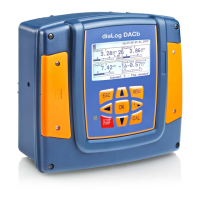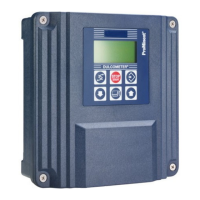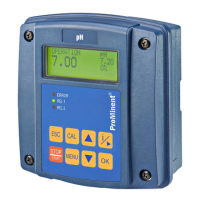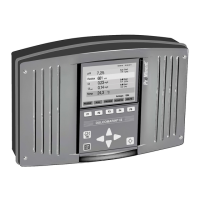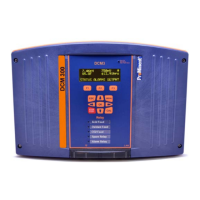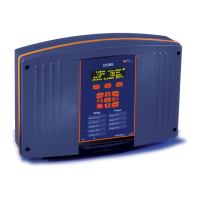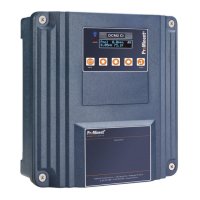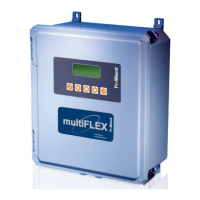1. Use the arrow keys to select
[Error log book]
2. Press
3. Use the arrow keys to move the cursor
to
[Record]
4. Press
ð
The activation symbol (tick)
appears in the selection boxes.
Now all warnings and error mes‐
sages are recorded.
Reading messages
5. Use the arrow keys to move the cursor
to
[Read]
6. Press
ð
This automatically removes the
activation symbol. If you wish to
record further errors after
[Reading]
, then it is necessary to
reactivate the
[Error log book]
. The
tick re-appears.
Deleting the
[error log book]
7. Use the arrow keys to move the cursor
to
[Delete]
8. Press
ð
This will irrevocably delete the error
log book file on the SD card.
Error log book
Entry
A1676
Warning 04 channel 2
The measuring channel is
not yet calibrated
32/32
Status coming
Fig. 113: Reading the [Error log book]
Use the arrow keys to browse through the
entries in the error log book. Press to return
to the continuous display.
17.2.3 Using the
[Data log book]
(optional)
The statuses of the digital inputs
The [Data log book] saves all measured
values, correction variables, control
variables and the status of the digital
inputs.
Data log book
Record
A1677
9.1.3.1
Read
Configure
Fig. 114: Configuring the [Data log book]
First configure the
[Data log book]
before you
activate it. You can select which data is to be
recorded. All data is selected by default. You
can specify at what interval the data is to be
saved. For example, if one file is to be created
each per day, from 00.00 to 24.00. Then the file
name is = YYMMDD.CSV. You can also record
an endless file and give it a random name.
Data is always saved in CSV format. CSV
stands for
C
omma-
s
eparated
v
alues. This
format can be, for example, read and edited
with MS Excel.
Function: Data logger
162
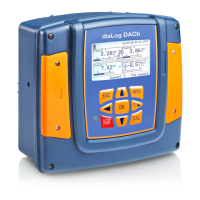
